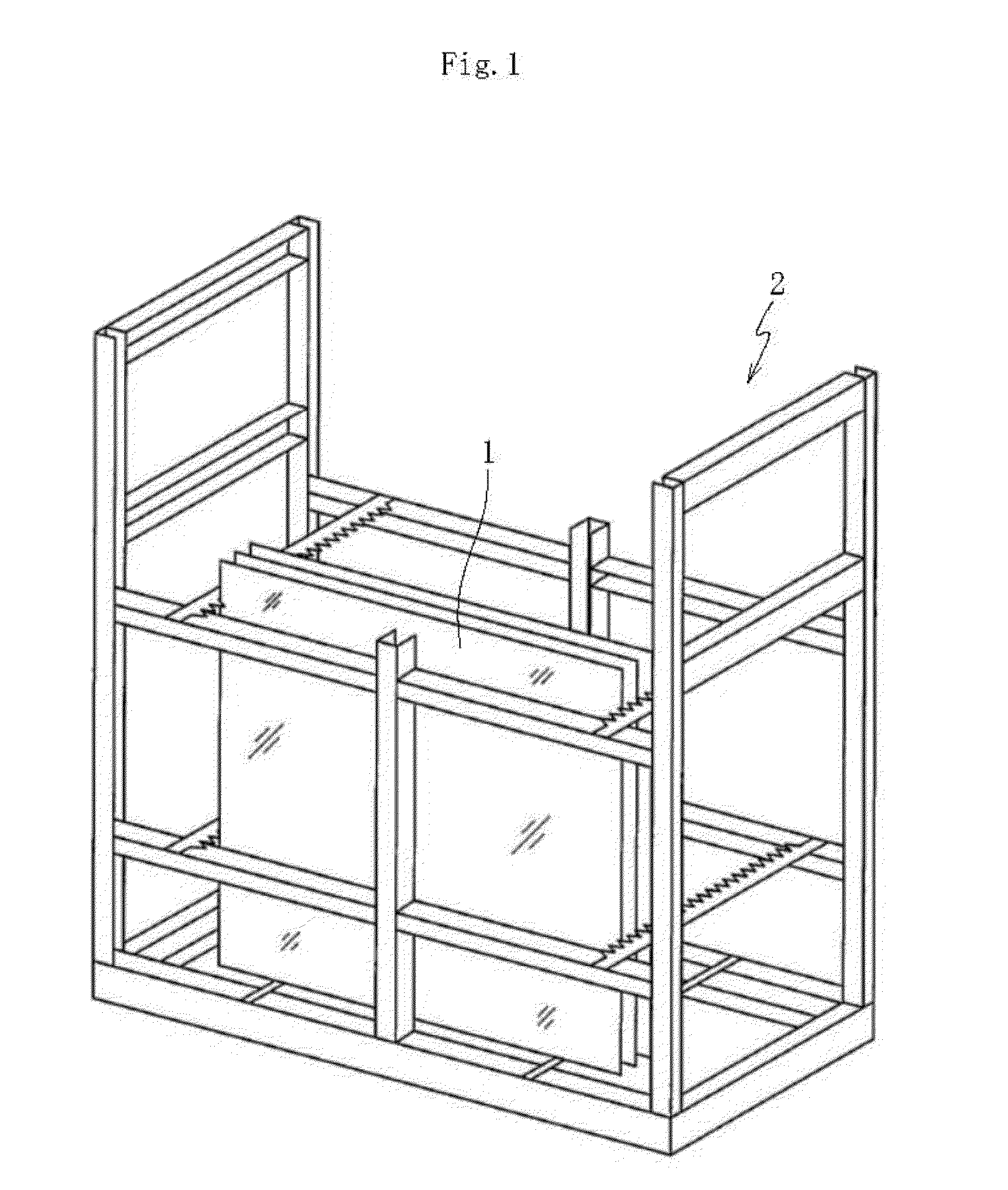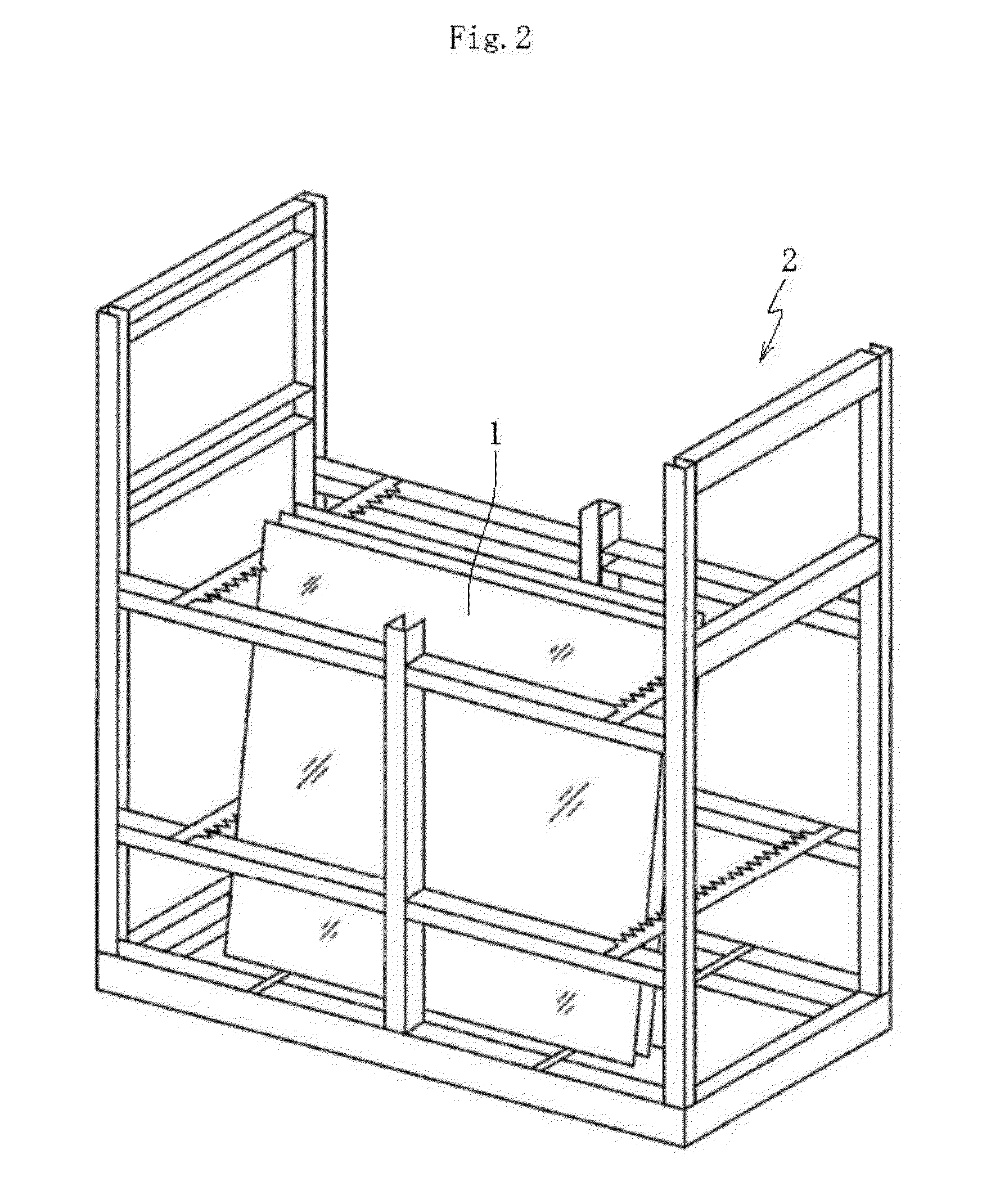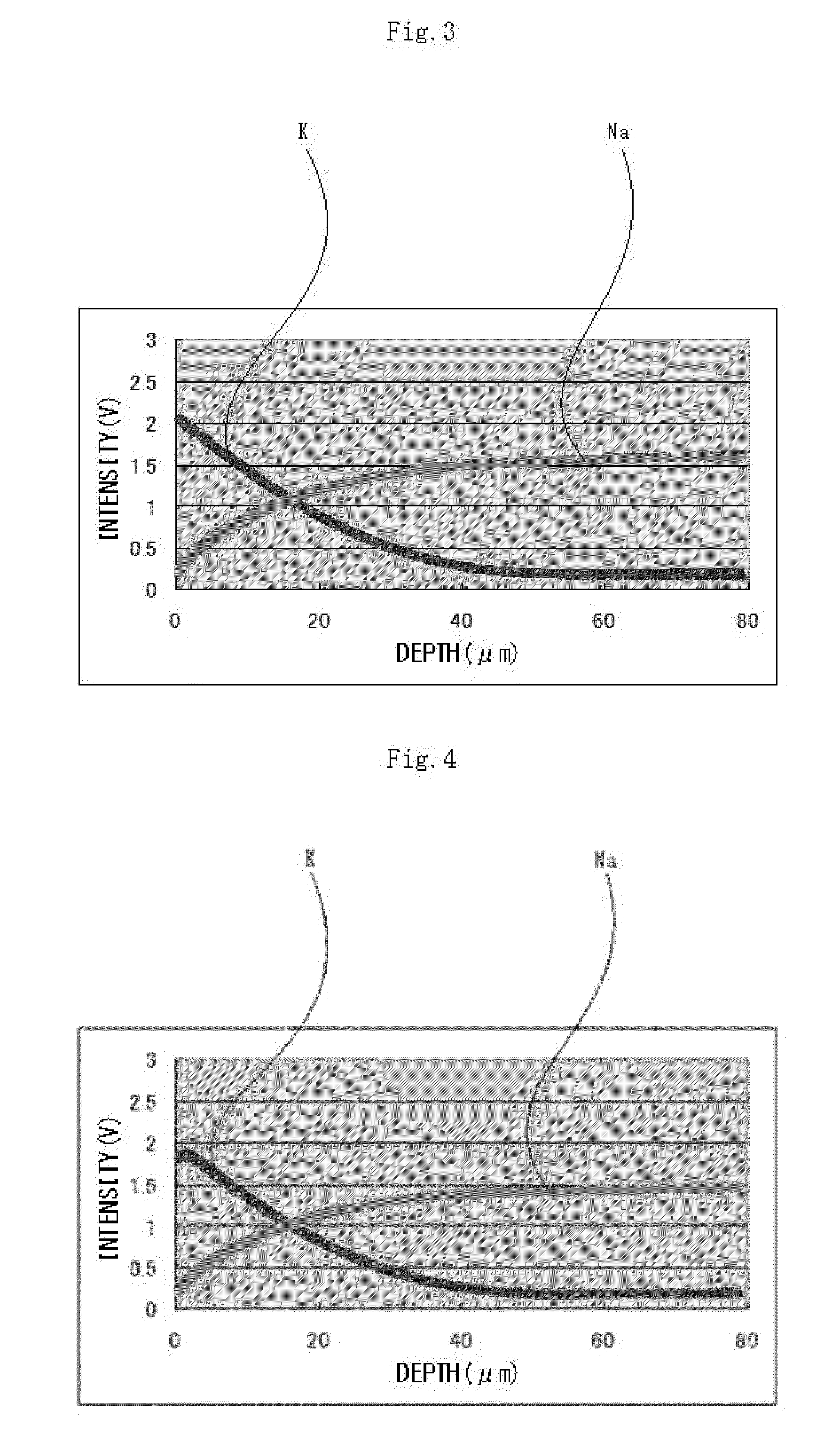Method for producing toughened glass plate
- Summary
- Abstract
- Description
- Claims
- Application Information
AI Technical Summary
Benefits of technology
Problems solved by technology
Method used
Image
Examples
example 1
[0097]The present invention is hereinafter described in detail with reference to Examples. It should be noted that the following Examples are merely illustrative. The present invention is by no means limited to the following Examples.
[0098]Examples (Sample Nos. 1 to 12) of the present invention are shown in Table 1.
TABLE 1CompressiveDepth of layerSheetNumber ofHeatWarpage level (%)stress (MPa)(μm)thick-sheetsTempera-Tempera-treatmentHeatAfterAfterAfterAfterAfterAfternessto betureturetempera-treatmenttemperingheattemperingheattemperingheatSample(mm)treatedincreasedecreaseturetimetreatmenttreatmenttreatmenttreatmenttreatmenttreatmentNo. 10.715° C. / minFurnace410° C.1 hour0.150.086955244451coolingNo. 20.615° C. / minFurnace410° C.1 hour0.15−0.056895264351coolingNo. 30.615° C. / minFurnace310° C.1 hour−0.13−0.056896754344coolingNo. 40.5515° C. / minFurnace310° C.1 hour0.130.087277214544coolingNo. 50.7245° C. / minFurnace310° C.1 hour0.140.077086944545coolingNo. 60.715° C. / minFurnace310° C.1 hour...
example 2
[0111]First, glass raw materials were blended to produce a glass batch so as to comprise as a glass composition, in terms of mass %, 61.4% of SiO2, 18% of Al2O3, 0.5% of B2O3, 0.1% of Li2O, 14.5% of Na2O, 2% of K2O, 3% of MgO, 0.1% of BaO, and 0.4% of SnO2. Next, the glass batch was loaded into a continuous melting furnace and formed into a sheet shape by an overflow down-draw method after a fining step, a stirring step, and a supply step. Then, the resultant was cut into dimensions of 1,800 mm×1,500 mm×0.5 mm (thickness) to produce glass sheets to be tempered (parent sheets). It should be noted that the glass sheets to be tempered each have a density of 2.45 g / cm3, a strain point of 563° C., a thermal expansion coefficient of 91.3×10−7 / ° C., a temperature at 104.0 dPa·s of 1,255° C., a temperature at 102.5 dPa·s of 1,590° C., a liquidus temperature of 970° C., and a liquidus viscosity of 106.3 dPa·s.
[0112]Next, the resultant glass sheets to be tempered (parent sheets) were subjecte...
PUM
| Property | Measurement | Unit |
|---|---|---|
| Temperature | aaaaa | aaaaa |
| Temperature | aaaaa | aaaaa |
| Temperature | aaaaa | aaaaa |
Abstract
Description
Claims
Application Information
 Login to View More
Login to View More - Generate Ideas
- Intellectual Property
- Life Sciences
- Materials
- Tech Scout
- Unparalleled Data Quality
- Higher Quality Content
- 60% Fewer Hallucinations
Browse by: Latest US Patents, China's latest patents, Technical Efficacy Thesaurus, Application Domain, Technology Topic, Popular Technical Reports.
© 2025 PatSnap. All rights reserved.Legal|Privacy policy|Modern Slavery Act Transparency Statement|Sitemap|About US| Contact US: help@patsnap.com



